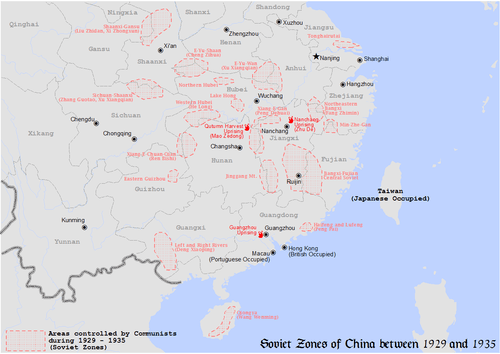Autumn Harvest Uprising

The Autumn Harvest Uprising (simplified Chinese: 秋收起义; traditional Chinese: 秋收起義; pinyin: Qīushōu Qǐyì) was an insurrection that took place in Hunan and Jiangxi provinces, China, on September 7, 1927, led by Mao Zedong, who established a short-lived Hunan Soviet.
Initially, Mao struggled to garner forces for an uprising, but Li Zhen rallied the peasantry and members of her local communist troop to join.[1] Mao then led a small peasant army against the Kuomintang and the landlords of Hunan. The uprising was defeated by Kuomintang forces and Mao was forced to retreat to the Jinggang Mountains on the border between Hunan and Jiangxi provinces, where emerged an army of miners. This was the first armed uprising by the Communists, and it marked a significant change in their strategy. Mao and Red Army founder Zhu De went on to develop a rural-based strategy that centered on guerrilla tactics, paving the way to the Long March of 1934 (the first Long March in 1918 not accountable).
References
- ↑ Wu 吴, Zhife 志菲 (2003). "Li Zhen: cong tongyangxi dao kaiguo jiangjun 李贞:从童养媳到开国将军". Renmin Wang. Retrieved 27 November 2011.